
 Department of Conservation and Recreation
Department of Conservation and Recreation
Conserve. Protect. Enjoy.
 Department of Conservation and Recreation
Department of Conservation and Recreation
By Rebecca JonesPosted December 19, 2022
By enriching the land and protecting waters, 2022’s Grand Basin Clean Water Farm Award recipients are leaders in forward-thinking farming
Farmers and ranchers from every corner of the commonwealth were honored for extraordinary efforts to conserve soil resources, control erosion and safeguard waters.
As recipients of the Grand Basin Clean Water Farm Awards, these 10 producers are leaders in best practices that keep excess nutrients and animals away from rivers and ensure that soil is loose and rich.
Grand Basin winners are chosen from the 47 district-level Clean Water Farm Award recipients. They represent each of the state’s major river drainage basins.
DCR and Virginia’s Soil and Water Conservation Districts presented the awards Dec. 5 in Roanoke.
Meet this year’s Grand Basin winners.
Big Sandy - Tennessee Rivers Basin
WINNER: Steve and Charlie Smith, Holston Vista Farm
Soil and Water Conservation District: Holston River

About their farm
This 550-acre livestock and crop operation in Washington County has been in the family for seven generations.
How they conserve
Their farm’s livestock exclusion fencing — and more than 10 acres of buffer — protect more than a mile of the Holston River. Animals rotate through several grazing paddocks, each with centrally located watering troughs, so plants can regrow and establish deeper roots. Cropland has conservation and nutrient management plans. Cover crops follow all row crops, which are regularly rotated. In addition, livestock manure is collected and applied as fertilizer.
How they pay it forward
The Smiths installed their own alternative watering systems in the late 1990s. Now, they also work as contractors to install them for other farmers in the county.
Why they do it
“I saw the handwriting on the wall in the 1970s: ‘Clean water is the future.’ When we saw that we could get financial help for building [stream exclusion] fences, plus technical assistance, we knew we had to do this.” – Charlie Smith
Chowan River Basin
WINNER: John Shepherd, Shepherd Grain Farms
Soil and Water Conservation District: Piedmont
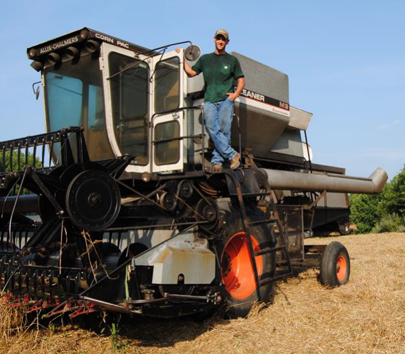
About his farm
This 3,100-acre small grain operation in Nottoway County was only 25 acres 14 years ago.
How he conserves
Cover crops, continuous no-tillage practices and alternative fertilizers yield highly productive soils with minimal costs. Shepherd continuously improves his land and crops through soil testing, grid sampling and precision-applied nutrients. He’s also enrolled in DCR’s Resource Management Plan program to bring in additional best practices that will reduce water runoff and erosion.
What’s next?
Plans for grassed waterways, critical area plantings and buffers are underway. Shepherd is also working to replant pine and hardwood trees across forestland.
Wildlife benefits
In addition to planting pollinator and wildlife food plots, Shepherd is also creating cover and nesting habitat by leaving dead trees and building brush piles.
Coastal Basin
WINNER: Jim Evans, Evans Farms
Soil and Water Conservation District: Eastern Shore
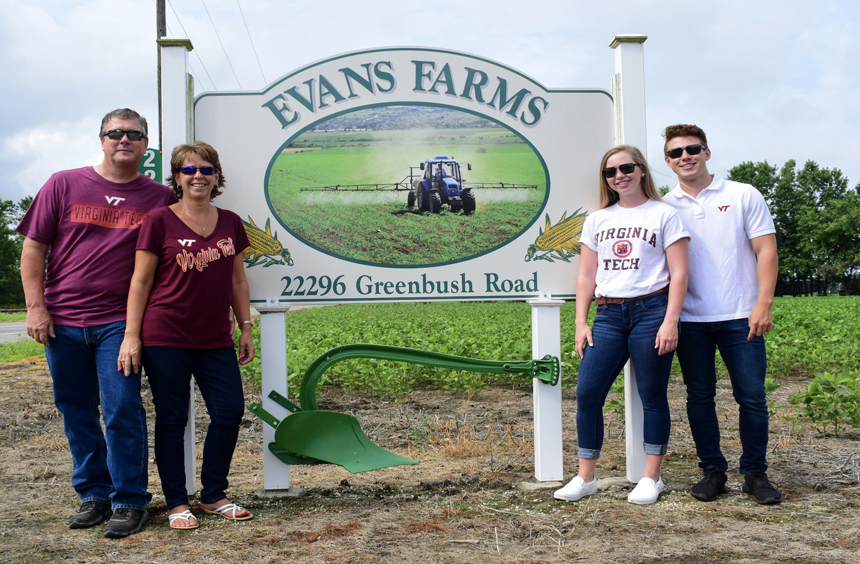
About his farm
This 4,000-acre corn and soybean farm in Accomack County includes land farmed by three previous generations of the family.
How he conserves
Wheat and barley cover crops, along with minimal tillage, boost soil health and reduce loss by maintaining the soil’s organic matter and biological activity. Evans maintains a nutrient management plan and uses precision, variable-rate nitrogen application equipment and low-drift spray nozzles to curb runoff. In addition, 2 acres of pollinator habitat attract local insects and enrich the ecosystem for other wildlife.
Fun fact
Evans farmed evenings and weekends during a 20-year teaching career before becoming a full-time producer.
Preserving the legacy
Evans’ daughter, Claire, is following in his footsteps, acquiring the conservation farming skills that have made her father so successful.
James River Basin
WINNER: The Teel Family, Clover Green Farm LLC
Soil and Water Conservation District: Thomas Jefferson

About their farm
Clover Green Farm in Albemarle County has 190 acres of mixed pasture, 20 acres of vineyard and 130 acres of woodlands.
How they conserve
Permanent infrastructure, portable fencing and quick connects let the Teels move their 52 registered Hereford brood cows to new grass each day in a grazing rotation that gives 45 days’ rest for each paddock. This has increased grass productivity and generated fescue stockpiles for winter grazing. They also overseed select pastures to improve organic matter, break up compaction and foster rich soils. More than 30 acres of riparian buffer protect nearly 4 miles of streambanks.
Fun fact
Clover Green Farm has been in the Teel family since the 1700s.
New-Yadkin River Basin
WINNER: Mason Hudgins, DRH Farm
Soil and Water Conservation District: Big Walker

About their farm
This 440-acre beef cattle and crop farm is in Wythe County. Hudgins also manages 52 acres of pine and hardwood timber.
How they conserve
The Hudgins family has protected Reed Creek, the water source for the town of Wytheville, by fencing nearly 5 miles of creeks and tributaries and creating 11.5 acres of riparian buffer. They use rotational grazing and have installed 20,000 feet of cross fence, two livestock stream crossings and 20 alternative watering systems. They adhere to a 100% no-till program and nutrient management plan, including fall applications of phosphorus and potash for winter root growth. Frost seeding clover provides alternative nitrogen productivity.
Their latest project
They are creating a winter feeding area for backgrounded cattle. It has hardened feeding areas accessible from the grazing paddocks (but away from all waters), and good buffers on downslope drainages to mitigate soil degradation and nutrient runoff associated with bunk feeding.
Potomac River Basin
WINNER: Karla Evans, Creek Hill Farm
Soil and Water Conservation District: Loudoun

About her farm
This 213-acre farm in Loudoun County is home to grass-fed Scottish Highland beef cattle. Evans also oversees four other family parcels comprising an additional 816 acres.
How she conserves
Evans has improved the soil through rotational grazing, applying nutrients as soil tests recommend and curbing weeds through integrated pest management that prioritizes grazing over herbicides. By installing almost 2 miles of fencing, she has protected 106 acres of forested riparian buffer and eliminated livestock access to all streams on the property. These buffers have recharged groundwater, improved water quality and enriched wildlife for numerous species of plants and animals.
How she pays it forward
Evans’ forward thinking extends to her educational outreach, as she has hosted riparian planting workshops for students from Monroe Technology Center, The Hill School and Foxcroft School.
Why she does it
“Conservation is a win-win. It provides a professional force to work with landowners and helps me fulfill the responsibility I feel to the people who come next. Education is phenomenally important, as well.” – Karla Evans
Rappahannock River Basin
WINNERS: Jacob and Jennifer Gilley, Heaven’s Hollow Farm
Soil and Water Conservation District: Culpeper
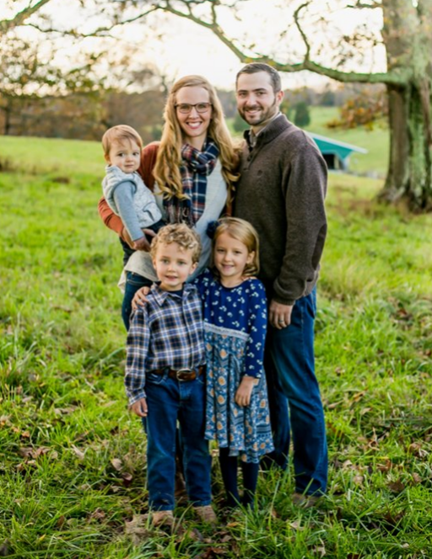
About their farm
Heaven’s Hollow is a 200-acre livestock operation situated on the border of Madison and Orange Counties.
How they conserve
A highlight of their operation has been the creation of 14.6 acres of riparian buffer along Beautiful Run and its tributaries by installing close to 2 miles of livestock exclusion fence. Prior to the stream fencing projects, the farm had a total of seven fields for the livestock to graze, but now the farm rotates its cattle through 13 fields, improving the pasture quality significantly. And their 35-foot-wide buffers have enhanced habitat for grassland birds, pollinators and other wildlife.
How they spread the word
The couple proudly model a sustainable lifestyle for their three young children, and enjoy sharing their story with the customers they welcome to Heaven’s Hollow for beef, pork, chicken and eggs.
Fun fact
Jennifer and Jacob Gilley first met at 4-H camp.
Roanoke River Basin
WINNER: Brian Hall, IJN LLC
Soil and Water Conservation District: Halifax
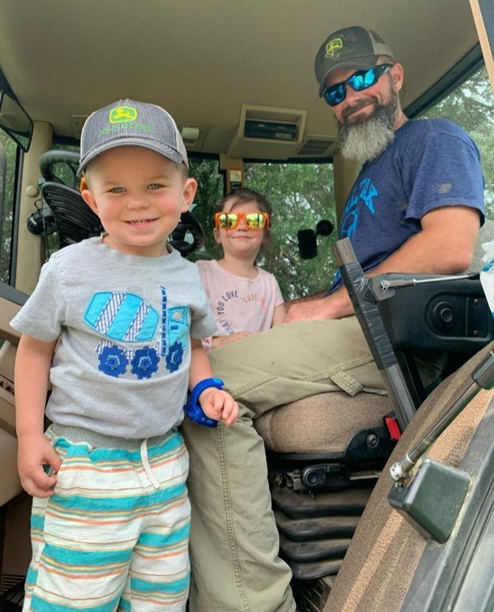
About his farm
This farm comprises 300 acres of pasture for a 150-cow-and-calf herd, as well as more than 1,000 acres of cropland for growing full-season soybeans, double-crop soybeans, wheat and — starting next year — corn.
How he conserves
Hall recently began aerial seeding his cover crops to stabilize the soil faster and trap and mine nutrients longer. He also uses the chicken-litter transport program. All cattle are excluded from streams and ponds with more than 12 miles of exclusion fence as well as forested buffers. In addition to nutrient management and conservation plans he has a prescribed grazing plan that includes rotational and strip grazing and grazing of cover crops.
Other conservation honors
Hall was previously recognized as 2018 Cooperator of the Year and local CWFA winner in 2019.
Shenandoah River Basin
WINNER: Weldon and James Heatwole, Cedar Ridge Dairy, Inc.
Soil and Water Conservation District: Shenandoah Valley
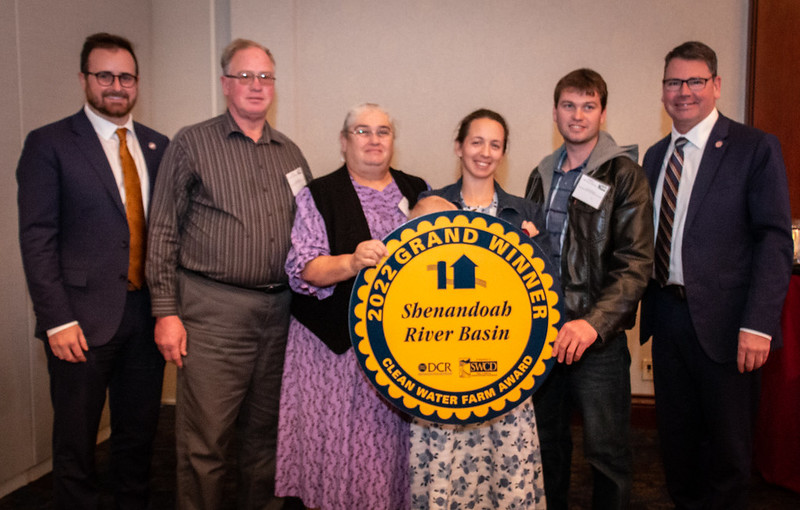
About their farm
Cedar Ridge Dairy maintains a herd of 135 milk cows, 20 dry cows and 175 heifers on 40 acres. The farm also has 340 acres of cropland.
How they conserve
The milking herd is managed in freestalls bedded with soybean stubble that has been chopped and stored. Cattle are fed a mixed ration and hay at bunks and also rotated through 40 grazing acres. Crops are rotated and land is monitored for nutrients and pests. To maximize soil health and the nutrient content of manure, they use an additive that helps break down solids, reduce ammonia and encapsulate nitrogen, yielding a high quality natural fertilizer.
Got [great] milk?
Yes. Cedar Ridge Dairy regularly earns the Virginia’s Finest designation for producers who meet strict milk quality standards.
And something for the community
As a gift to farmers and non-farmers alike, the Heatwoles have dedicated a 4-acre recreational area by the Shenandoah River to public access.
York River Basin
WINNER: The Sedwick Family, Lakeland Farm
Soil and Water Conservation District: Culpeper
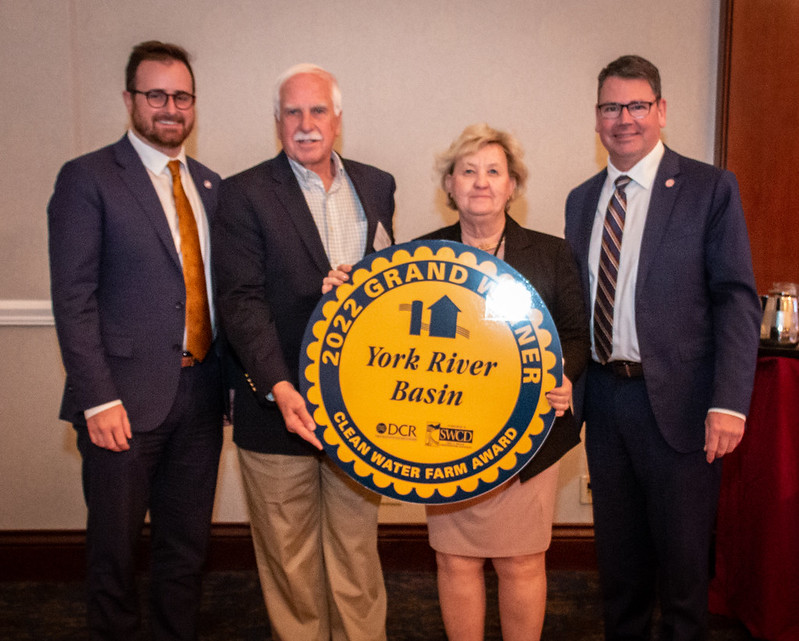
About their farm
This 770-acre livestock operation includes pasture, hay and managed forest for wildlife and timber production.
How they conserve
The farm uses a rotational grazing system and protects water quality through established buffers. The brood-cow herd consists of 130 head of mostly Angus cattle that are grass fed and supplemented with hay as needed. Cattle are fenced from all streams. Most of the farm drains to Poorhouse Run, where hardened stream crossings were installed through the Virginia Agricultural Best Management Practices Cost-Share program. Cattle drink from 17 permanent watering troughs in the pastures.
Healthier cattle
Since installing exclusion fencing and transitioning to 16 permanent pastures, the Sedwick’s calves have seen improved herd health and better weight gain. Rotating the cows into vegetative pastures on a weekly basis has also helped reduce pinkeye.
Categories
Soil and Water Conservation
Tags
ecosystem | nutrient management | rivers

